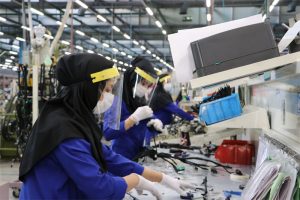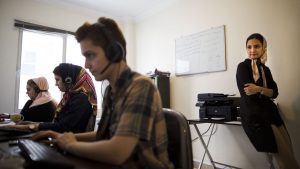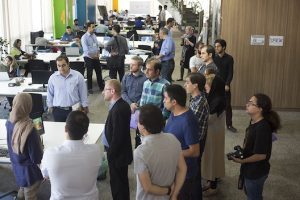The Ascent of Innovation: Mapping the Ecosystem of Biotech in Iran
Introduction: Iran’s Biotechnology Landscape and Growth Trends
The biotechnology sector in Iran represents a significant and rapidly maturing component of the nation’s innovation economy, marked by substantial government investment and a determined focus on achieving self-sufficiency in critical medical areas. Following the conclusion of the war with Iraq in 1988, Iran initiated strategic investments into education and research, fostering the foundational environment necessary for high-tech industries to flourish. Today, this commitment is evident in the operation of more than 15 biotechnology research centres and departments located within medical universities across the country.
Iran’s aspiration to become a major regional player in life sciences is clearly defined. According to a review by Mahboudi et al., Iran was positioned to become a leader in biotechnology products in Asia within three years of 2013, particularly in the realm of copied biopharmaceuticals. This ambitious goal is underpinned by the country’s strong local pharmaceutical manufacturing capability; Iran currently produces approximately 95% of its medicines locally, with 5% of this domestic production constituted by copied biopharmaceuticals.
The governance and direction of this expansive field have become increasingly structured. Policies designed to encourage the advancement of biotechnology as a successful industry are organized under the jurisdiction of key governmental bodies, including the Ministry of Science, Research and Technology; the Ministry of Health and Medical Education, Deputy of Research and Technology; and the Center for Cooperation of Science Technology and Innovation. This coordinated approach aims to accelerate the development of the biotech in iran ecosystem, supporting both academic initiatives and industrial production. For investors, researchers, and global founders, understanding this structured approach is crucial when assessing the potential of the biotech in iran landscape.
Analyzing Key Sectors: Medical, Pharmaceutical, and Agricultural Biotechnology
While the field of biotechnology is generally segmented into medical (Red), agricultural (Green), industrial (White), and marine (Blue) applications, the sources overwhelmingly indicate that the pharmaceutical and medical sector is the primary driver and strength of the biotech in iran industry. This dominance is centered around the production of biopharmaceuticals, specifically focusing on generics and biosimilars (or, as they are referred to in Iran, ‘copied biopharmaceutical products’).
-
Pharmaceutical and Medical Biotechnology (Red Biotech)
The core strength of top biotech in iran firms lies in their ability to locally manufacture complex biopharmaceuticals, which are often used to treat severe and chronic diseases. The Ministry of Health and Medical Education has approved specific regulations to support and encourage the local manufacturing of these products. This framework has resulted in the approval of at least 17 copied biopharmaceutical products, with a further 15 products reported to be in the pipeline, expected for approval within a subsequent three-year period following 2013.
These products address a diverse range of critical therapeutic areas, demonstrating significant national capability in specialized medicine:
- Oncology and Haematology: Products like AryoSeven (for Haemophilia/Von Willebrand disease), Arvestin (bevacizumab, for Cancer), PDgrastim (filgrastim, for Cancer and Neutropenia), Hebreastin (trastuzumab, for Stomach and Breast neoplasms), and Reditux/Zitux (rituximab, for Rheumatoid arthritis, Non-Hodgkins lymphoma, and Leukaemia).
- Autoimmune and Inflammatory Diseases: Examples include Altebrel (etanercept, for Arthritis and Psoriasis), Cinno Vex, ReciGen, and Ziferon (interferon beta products, for Multiple Sclerosis).
- Endocrinology and Metabolism: This includes CinnaFact (Buserelin acetate, for advanced prostate cancer and Endometriosis), Epolyrec and Betapoietin (epoetin alpha and beta, for Anaemia and Chronic kidney failure), and Cinno Par (parathyroid hormone, for Osteoporosis).
- Infectious Diseases and Vaccines: The Pasteur Institute of Iran is associated with the production of the hepatitis B vaccine, and products like PDferon-B (interferon alpha, for Chronic hepatitis C) and Pegaferon (peg-interferon alpha, for Chronic hepatitis C) are also produced.
The sheer variety of these domestically manufactured treatments underscores Iran’s progress toward reducing dependency on foreign imports for complex biological drugs.
-
Agricultural and Environmental Biotechnology (Green/White Biotech)
Although detailed product lists are concentrated on medical applications, the sources confirm the existence of institutional focus on agricultural science. The Agricultural Biotechnology Research Institute of Iran (ABRII) is listed among the nation’s notable biotechnology research companies. Similarly, the presence of the Gorgan University of Agriculture and Natural Resources in a list of biotech in iran suggests academic and research focus in this domain. While specific details regarding commercial agricultural or industrial biotech contributions are not elaborated in the sources, the institutional foundations are clearly established.
A Structured List of Leading Biotech Startups and Companies in Iran
The following table presents a selection of leading and emerging players that constitute the dynamic list of biotech in iran, based on available operational and product data, providing essential context for investors and partners.
| Company Name | Foundation Year | Location | Primary Focus/Specialisation | Employee Range | Key Products & Contributions |
| CinnaGen | 1994 | Tehran | Biopharmaceutical Manufacturing, Recombinant Proteins, Biosimilars | 501–1000 | Cinno Vex, ReciGen, CinnaFact, Cinno Par, PegaGen, SpikoGen, CinnaStim. Achieved EU GMP certification. |
| AryoGen Pharmed | 2009 | Tehran/Alborz | Biopharmaceuticals, Monoclonal Antibodies, Recombinant Proteins | 251–500 | AryoSeven, Arvestin, Altebrel, Zytux, AryoTrust (Trastuzumab), Arylia (Denosumab), VedAryo (Vedolizumab), Coageight. |
| Pooyesh Darou Biopharmaceutical Co. | 1997 | N/A | Recombinant Biopharmaceutical Products, Therapeutic Proteins | N/A | Epolyrec, PDgrastim, PDferon-B, Pegaferon. Utilizes technology exclusively from ICGEB. |
| Zistdaru Danesh | N/A | N/A | Biopharmaceuticals | N/A | Produces Ziferon (interferon beta 1b). |
| Recpharma | N/A | N/A | Biopharmaceuticals | N/A | Produces Epolyrec (epoetin alpha) and Immunex (interferon gamma). |
| Pasteur Institute of Iran | N/A | N/A | Biopharmaceuticals, Vaccines | N/A | Produces Epolyrec, hepatitis B vaccine, and PDferon-B. |
| Iran Biotech Fund | 2015 | Tehran | Funding/Investment in Biotechnology and Pharmaceutical sectors | 11–50 | Financial support for the ecosystem. |
| Jaber Ibn Hayyan Pharmaceutical | 1960 (1339) | Tehran | Biotechnology, Health care, Manufacturing, Pharmaceutical | 501–1000 | Broad pharmaceutical manufacturing capabilities. |
| Darou Pakhsh Pharmaceutical | 1956 | Tehran | Manufacturing, Medical, Pharmaceutical | 1001–5000 | Major player in the traditional pharmaceutical market. |
| Agricultural Biotechnology Research Institute of Iran (ABRII) | N/A | N/A | Research/Academic Focus | N/A | Focus on agricultural applications. |
| Royan Stem Cell Technology Co. | N/A | N/A | Stem Cell Technology/Research | N/A | Specialised research-oriented entity. |
Deep Dive into Leading Biotech Companies
CinnaGen: A Pioneer with Global Quality Standards
Founded in 1994, CinnaGen stands out as one of the best biotech in iran, having established itself as a major producer of biopharmaceuticals. CinnaGen’s dedication to quality and international reach is evidenced by its achievement of EU GMP certification from the European Medicines Agency (EMA), a significant milestone not only for the company but for the Middle East and North Africa (MENA) region as a whole. The company focuses intensely on high technology, continuous investment in manufacturing, and maintaining cost-effectiveness by implementing state-of-the-art equipment and rigorous standard procedures.
CinnaGen’s comprehensive product portfolio spans:
- Neurology & Ophthalmology: Including CinnoVex, ReciGen, Cinnomer, Xacrel, and TYALIa. ReciGen (interferon beta-1a) was notably studied for safety and effectiveness in COVID-19 patients.
- Oncology & Haematology: Featuring PegaGen, CinnaPoietin, CinnaStim, and Xtramab.
- Endocrinology & Infertility: Products such as Cinnal-f, CinnaTropin, CinnaFact, and CinnoPar. CinnaFact (Buserelin acetate) and Cinno Par (parathyroid hormone) are key examples of their approved copied biopharmaceuticals.
- Autoimmune & Immunology: Including CinnoRA, Zerafil, and SpikoGen.
CinnaGen’s ambition is driven by a mission to enter international pharmaceutical markets and be recognized as a pioneer, innovative, and eminent value-creative company globally. The company is part of a larger family, which includes AryoGen, NanoAlvand, and Aroko Bioengineering.
AryoGen Pharmed: Specialists in Complex Biologics
Established in 2009, AryoGen Pharmed is another powerhouse in Iranian biotechnology, specializing in complex recombinant proteins and monoclonal antibodies. AryoGen’s strategic focus is heavily weighted toward advanced therapeutic areas like cancer, autoimmune disorders, and haematological conditions.
Key products developed and manufactured by AryoGen include:
- Monoclonal Antibodies: Zytux (Rituximab biosimilar), AryoTrust (Trastuzumab biosimilar), Arvestin (Bevacizumab), Arylia (Denosumab), and VedAryo (Vedolizumab). These products are typically produced using advanced cell systems, such as Chinese Hamster Ovary (CHO) cells in suspension, demonstrating sophisticated manufacturing capabilities.
- Haematological Factors: AryoSeven (anti-haemophilic factor VII) and Coageight (recombinant coagulation factor VIII).
- Anti-inflammatory/Autoimmune: Altebrel (Etanercept).
AryoGen has also been recognized for its efforts in technology transfer, having received an award for best technology transfer among D-8 member countries.
Pooyesh Darou Biopharmaceutical Co.: Leveraging International Expertise
Pooyesh Darou, founded in 1997, has positioned itself as a regional leader in developing and applying advanced biotechnology to address unmet medical needs. The company is notable for its international collaborations and rigorous adherence to manufacturing standards.
- Technology Transfer: Pooyesh Darou exclusively acquired technology from the ICGEB (United Nations’ International Center for Genetic Engineering and Biotechnology, Trieste-ITALY) to manufacture recombinant-DNA-based therapeutic proteins, making it the first company in Iran to use genetically modified bacteria and cells to produce basic endogenous proteins.
- Quality and Compliance: Their biotechnological plant fully complies with cGMP rules and regulations. They collaborate internationally for quality control, working with ICGEB, Primm labs (GLP certified laboratory) in Milan-ITALY, and the National Institute for Biological Standards and Control (NIBSC) in London, UK.
- Products: The company is associated with several approved products, including Epolyrec (epoetin alpha), PDgrastim (filgrastim), PDferon-B, and Pegaferon (peg-interferon alpha).
Insights: Iran’s Research Environment, Challenges, and Global Collaboration Potential
Iran’s biotechnology sector is characterized by a strong, institutionally supported research base combined with critical challenges related to international standardization and market access.
The Robust Research and Development Environment
The governmental support structure is evident in the sheer number of research centers—more than 15 operating within medical universities. Furthermore, the academic output is recognized globally. The Iranian Journal of Biotechnology (Iran. J. Biotechnol.), published quarterly by the National Institute of Genetic Engineering and Biotechnology, holds a recently released Impact Factor of 1.5 in 2024, signaling the quality and recognized authority of scientific research emanating from the country.
Collaboration is a key facet of the research environment. Pooyesh Darou, for example, highlights its collaborations with the department of biotechnology at Tehran University of Medical Sciences (TUMS) and international entities such as ICGEB and NIBSC, which aid in the research and development of therapeutic drugs and ensuring QC standards.
The Challenge of Classification: ‘Copied Biopharmaceuticals’ vs. Biosimilars
A crucial aspect of the biotech in iran environment is the distinction in terminology and regulatory compliance. While Iranian firms are ambitious about being recognized as major biosimilar producers globally, Professor Majid Cheragali, a noted expert, highlighted a significant regulatory challenge in 2013.
Iranian pharmaceutical companies generally do not have access to the production procedures of originators, specifically lacking details on cell type, fermentation, and purification procedures. Consequently, they cannot claim ‘similarity’ to originator brands. These products, which include interferons and granulocyte colony-stimulating factors, are officially referred to as ‘copied biopharmaceuticals’. Critically, none of these products, as of the publication date of the source material, had received evaluation according to internationally recognized guidelines for biosimilars, receiving marketing authorization solely for the local Iranian market. This gap between domestic approval and international regulatory harmonization (like that of the EMA or FDA) poses a structural challenge to large-scale global expansion, despite notable achievements like CinnaGen’s EU GMP certification for manufacturing quality.
Market and Export Challenges
Even leading companies face external market management issues. CinnaGen, a company actively participating in regional events such as Duphat and the Iraq Health Exhibition, issued reports concerning the unauthorized export and availability of counterfeit versions of its products. These counterfeit products were reported to be smuggled by unauthorized dealers and travelers to neighboring countries, including Gulf countries like the UAE and Kuwait. This indicates that while regional demand and presence exist, regulatory infrastructure and supply chain security for international markets remain complex.
Future Outlook for Biotech in Iran 2025
The trajectory of the biotech in iran sector suggests continued expansion, particularly in high-value biopharmaceuticals.
The foundation laid by strong domestic production, with Iran producing 95% of its medicines locally, coupled with the proactive regulatory environment that has already approved nearly two dozen complex copied biopharmaceuticals, provides a strong base for future growth. The 2013 assessment that Iran was well placed to become “one of the biggest biosimilar producers in the world” and lead Asia in product numbers still serves as a motivational benchmark.
Concrete indicators of forward momentum extending into the near future include:
- Leadership Recognition: Dr. Haleh Hamedifar, Founder and Chairperson of CinnaGen Group, was named among the Top 10 Healthcare Leaders for 2025 by Forbes Middle East. Such international recognition suggests that the industry’s leaders are successfully steering growth and gaining global visibility, highlighting the potential of the biotech in iran 2025 environment.
- Maintaining High Scientific Standards: The Iranian Journal of Biotechnology maintaining a 2024 Impact Factor of 1.5 suggests a commitment to rigorous, globally competitive research output continues.
- Quality Compliance: The hard-won EU GMP certification secured by CinnaGen shows that, at least on the manufacturing side, Iranian firms are capable of meeting the strictest international quality criteria, paving the way for potential future collaborations or export routes, provided the biopharmaceutical equivalence challenges are addressed.
For the biotech in iran 2025 landscape, the focus will likely remain on enhancing research quality, expanding the product pipeline (estimated to have 15+ additional products forthcoming), and strategically navigating the regulatory hurdles necessary to transition from being a producer of domestically approved ‘copied biopharmaceuticals’ to internationally recognized biosimilars.
Frequently Asked Questions (FAQ)
- What defines the current state of biotech in iran? The current state of biotech in iran is characterized by significant national investment in research and education, resulting in over 15 biotech research centers. The sector is dominated by the pharmaceutical industry, specifically the local production of ‘copied biopharmaceutical products’ (biosimilars). Iran produces 95% of its medicines locally and aims to become a major biosimilar producer globally.
- Which are the top biotech in iran companies and what do they specialize in? The top biotech in iran companies include CinnaGen, AryoGen Pharmed, and Pooyesh Darou Biopharmaceutical Co.. CinnaGen specializes in a wide range of recombinant proteins and has achieved EU GMP certification. AryoGen Pharmed is known for producing complex monoclonal antibodies (like Trastuzumab and Rituximab biosimilars). Pooyesh Darou focuses on therapeutic proteins using internationally sourced technology from ICGEB.
- Is there a comprehensive list of biotech in iran available for researchers and investors? Yes, a comprehensive list of biotech in iran includes major players like AryoGen Pharmed, CinnaGen, Pooyesh Darou, and others such as Zistdaru Danesh and Recpharma, which are actively manufacturing approved biopharmaceutical products. Other notable research and commercial entities include the Agricultural Biotechnology Research Institute of Iran (ABRII), Royan Stem Cell Technology Co., and the Iran Biotech Fund.
- What is the key difference between Iranian ‘copied biopharmaceuticals’ and internationally recognized biosimilars? In Iran, biotherapeutic products are often referred to as ‘copied biopharmaceuticals’. According to some experts, these products cannot claim similarity to originators because Iranian manufacturers lack access to the originating company’s proprietary production details, such as purification and cell type procedures. Furthermore, these copied products have historically received marketing authorization only for the local Iranian market, without evaluation according to internationally recognized guidelines for biosimilars.
- What is the future outlook for biotech in iran 2025? The outlook for biotech in iran 2025 is positive, supported by the continued development of a large product pipeline (estimated to include 15+ new products) and international recognition of its leaders. The sector is driven by organized policies from the Ministry of Health and Ministry of Science. Key future activity will involve expanding manufacturing quality (following examples like CinnaGen’s GMP certification) and navigating global regulatory standards to achieve broader export capabilities.
- How is the best biotech in iran managing international growth and challenges? The best biotech in iran companies are focused on achieving internationally recognized standards, as demonstrated by CinnaGen obtaining EU GMP certification. However, the global collaboration potential is affected by the issue of product classification (copied vs. biosimilar) and market challenges, including unauthorized export and the circulation of counterfeit products in neighboring regions. International partnerships, like those held by Pooyesh Darou with ICGEB and NIBSC, are crucial for maintaining quality and advancing R&D.












Post Comment